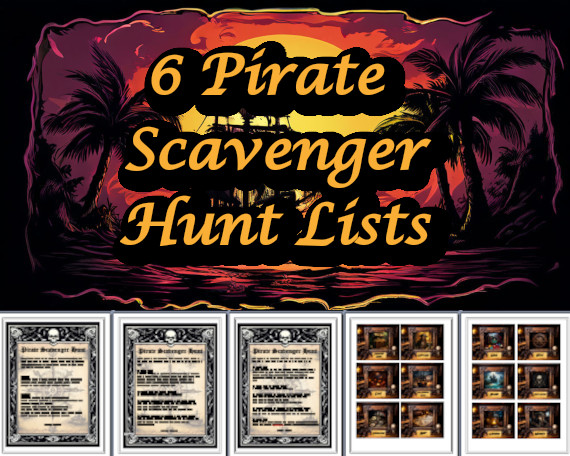
Rhyming Clue to Rhyming Clue Treasure Hunts
What we call a Rhyming Clue to Rhyming Clue format is perhaps the most common of all the treasure hunt design formats. Its premise is simple - the treasure hunter is led from location to location in a linear pattern led only by a rhyming clue left at each location. When the average person envisions setting up a treasure hunt, this is typically the format in mind. Although it's perhaps the most common and traditional, it can also be accused of being the most cliche. A treasure hunter's first experience with this format, no matter the age, can be fun and even charming (depending on the the creativity of the clues written and the locations chosen to go to.) However, after having seen/created/completed more than a few within this format, the participants will become increasingly less interested in this format of a treasure hunt. Typically, adults are least enthusiastic about going on a treasure hunt of this kind due to their possible over-exposure to the format itself, not necessarily treasure hunts in general. If you are planning a treasure hunt and would like to consider other formats, take look at these other articles : Non Linear Treasure Hunts and Non-Rhyming Clue to Clue Treasure Hunts.
 |
6 Pirate Themed Scavenger Hunt Lists - Download them all now! With six different lists to choose from, you won't have any trouble finding the perfect activity you'd like to plan. There's even a for prereaders (with images only.) High quality images are also included that can be printed and hidden so that your scavenger hunt can be set up just about anywhere. Photo hunt options, bonus points and even a couple puzzles thrown in. You'll find the list that's just right for you! CLICK HERE TO DOWNLOAD THEM! |
For those that have decided that this particular format is most ideal
for what they'd like to plan, here are some key thoughts, strategies and
ideas to make it easier to create, smoother to facilitate and more fun
for the treasure hunter!
Consider doing something different at the very end of the treasure hunt.
Provide an activity or puzzle to solve. Perhaps a phone number to call
or secret document to open (i.e. a WORD document that is password protected,
etc.) The rhyming clue to rhyming clue can suffer the pitfall of monotony,
however changing it up at the end will leave a fun twist as the last memory
of the hunt. Plus, it's just fun!
Come up with ways for the treasure hunter to 'earn' the clues at each
or some of the locations. Perhaps they arrive at the correct location,
but the clue is difficult to get to such as underwater in a pond, in a
tree where they'll need to get a ladder, etc. You can also station a live
person at the location that has the clue. Perhaps the treasure hunter
will need to complete a task or do a favor for your volunteer before they'll
give up their clue. Having something to DO at some/all of the locations
will help break the potential monotony.
Make sure that someone else tests your clues. One of the biggest pitfalls
of creating a treasure hunt of ANY type is the 'sticking point.' By 'sticking
point' we are referring to any point in the hunt where the participant
can't get to the next location for whatever reason. In this case, it would
be because of a faulty clue. Sometimes we can be over clever with our
clue writing and can leave an over challenging clue for the treasure hunter
to follow. The LAST thing you want is to create a hunt that the participant
can't finish. Double check those clues!
In the same vein as avoiding sticking points, be very careful when placing
clues in public locations. The basic point is that you have to have clues
that are tamper-proof. If the entire hunt is inside your home, this may
not be an issue. However, if any of your locations are outside your home,
you leave yourself exposed to the possibility of someone accidentally
finding the clue and taking it, changing it, vandalizing it, etc.
If the hunt is for someone endeared to you (i.e. spouse, partner, etc.)
consider carefully the locations that you choose. It would be a perfect
time to relate the locations to your relationship and working that information
into your clues. It will help remove or at least the 'cliche' of this
format. Places that you might include are your favorite meal items in
the fridge, or the bedroom (for those planning a hunt inside their homes.)
If outside your home, consider places associated with fond memories of
previous dates and outings, favorite ice cream parlors, etc. Additionally,
to make it more personal, hand write the clues. Yes, the computer will
make the message more legible…but your own handwriting will be more
personal (if this is your goal.)
What if you are planning a rhyming clue to rhyming clue treasure hunt
for several people to participate in at once? The biggest hiccup with
multiple people/teams going through a linear treasure hunt such as this
is that you'll find all of the participants rushing to the first location
and then following each other from/to each location. Teams could simply
follow the crowd and get to the end without reading a single clue. We
have some creative solutions for this in our article Traffic Control for
Treasure Hunts.
Consider an overall goal for the treasure hunt. Give them a REASON for
going on your hunt. Will there be something or someone waiting for them
at the end? If you've worked a storyline into your treasure hunt, it might
be easier to come up with motivations for the treasure hunters to complete
your hunt. For our article on storyline within a treasure hunt, click
HERE.
Consider the paper carefully that you write/print your clues on. The type
of paper/surface that is used can make for a more fun time. What if the
clue was left on a computer screen already typed out and waiting for the
treasure hunter to find? What about writing on a piece of draft wood?
Be creative. If your intent is to use paper clues, consider something
that will be special enough for them to be excited to find and hold. Our
antiqued paper that we offer was created with this aspect in mind - creating
something that the treasure hunter will want to keep as souvenirs after
the treasure hunt is over. You went through all of the trouble to create
the clues, don't limit yourself to plain white computer paper. To see
our current selection of specially aged paper, click HERE